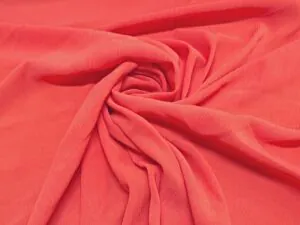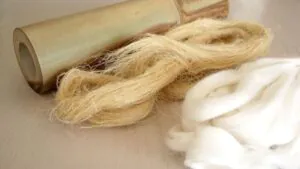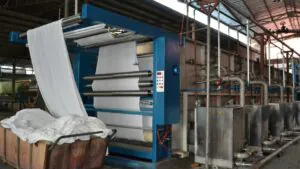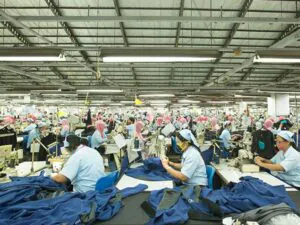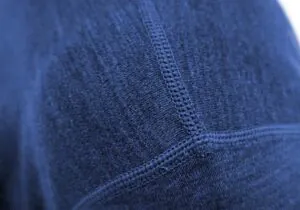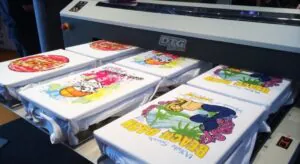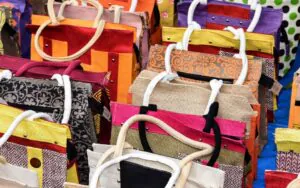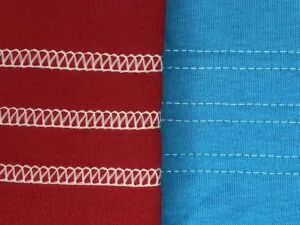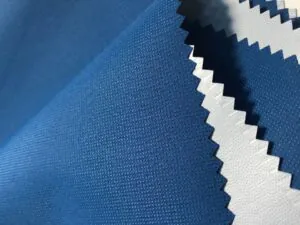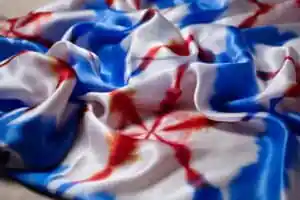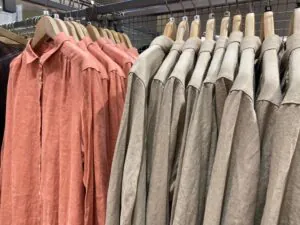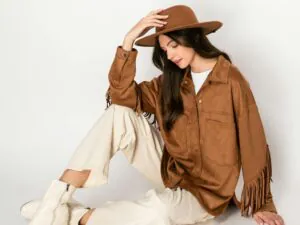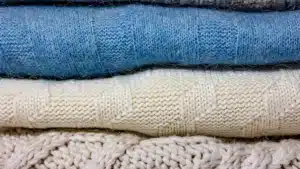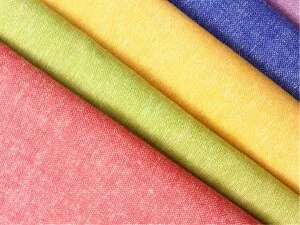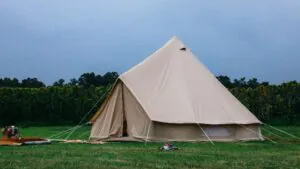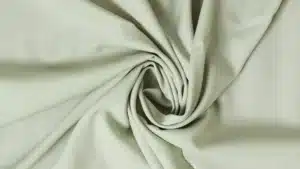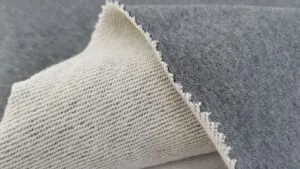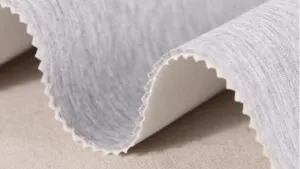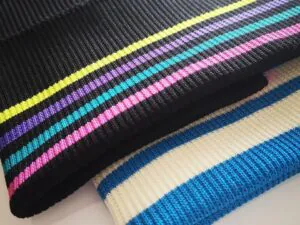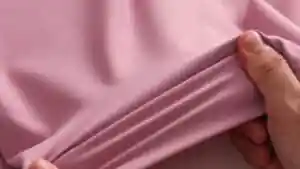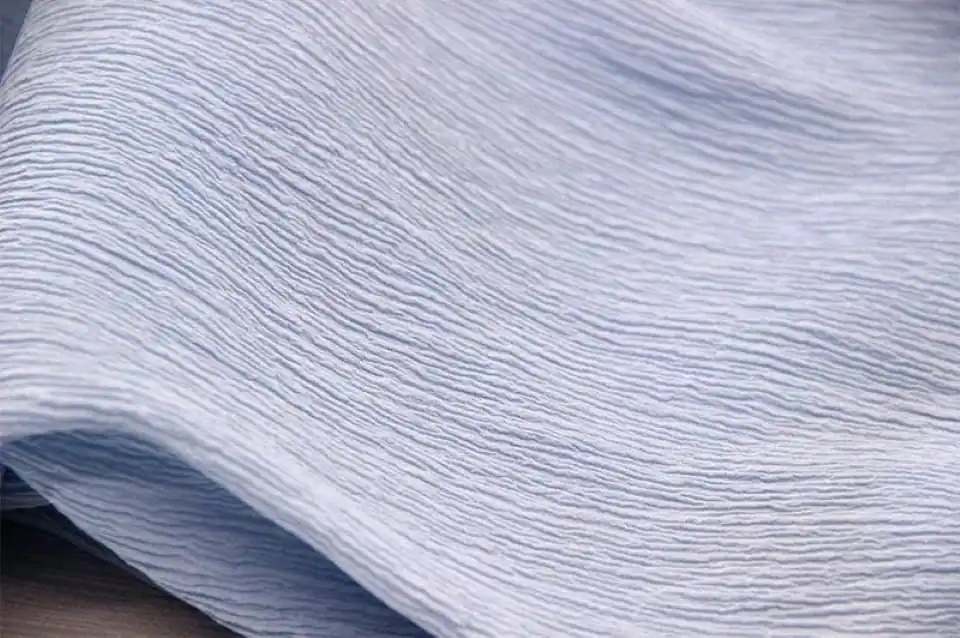
Crepe fabric is special because of its wrinkled texture and soft feel. Its surface feels a little rough but still fancy. This fabric is light, so it’s great for clothes that move nicely. It hangs well, making outfits and home items look pretty. Crepe can be made from natural or man-made fibers, giving it many uses. Its textured look makes outfits and decorations more stylish.
Key Takeaways
Crepe fabric has a wrinkled look and feels very light. It is great for trendy clothes and home decorations.
There are many types of crepe, like silk, wool, and polyester. Each type has its own benefits, like being fancy or strong.
Crepe lets air through and keeps sweat away. This makes it comfy in hot weather and great for summer clothes.
To keep crepe nice, wash it gently and store it carefully. This helps it last longer and look good.
Crepe can be used for clothes, home items, and accessories. It is a good choice for both style and usefulness.
What is Crepe Fabric?
Definition and Origin
Crepe fabric is a special material with a bumpy surface. This texture comes from twisting the yarns in a unique way. The word "crepe" is from the French word "crêpe," meaning "wrinkled." In the 1800s, people wore crepe for mourning clothes. Now, it’s used for many things like fashion and home décor.
Crepe can be made from natural fibers like silk or wool. It can also use synthetic materials like polyester. This makes it useful for many purposes, from light summer dresses to warm winter outfits. Below is a table showing its main features:
Characteristic | Details |
|---|---|
Fabric name | Crepe |
Composition | Wool, silk, or synthetic materials |
Breathability | Higher in organic materials than synthetic |
Moisture-wicking | Generally high |
Heat retention | Low |
Stretchability | High |
Pilling/bubbling | Low |
Common uses | Scarves, dresses, eveningwear, high fashion |
Did you know? Crepe fabric is loved for being both fancy and useful. It works well for stylish outfits and everyday wear.
How is Crepe Fabric Made
Making crepe fabric starts with creating crepe yarn. The yarn is twisted tightly, giving it a springy and textured look. Then, the yarn is woven into fabric using different methods. Each method changes how the fabric looks and feels:
Plain Weave: Yarns cross at right angles, making a simple bumpy texture.
Twill Weave: Yarns cross at slants, creating diagonal lines.
Satin Weave: This method makes the fabric smooth and shiny.
After weaving, the fabric might be dyed, printed, or finished. These steps make the fabric look better and feel nicer. This process creates many types of crepe, from light and airy to thick and firm.
Crepe fabric is known for its wrinkled look and soft drape. It’s lightweight and breathable, so it’s great for warm weather. Its stretchiness also makes it comfy and easy to wear.
Tip: When buying crepe fabric, check the fiber type. Silk feels softer, but polyester is tougher and cheaper.
Characteristics of Crepe Fabric
Texture and Appearance
Crepe fabric is known for its special texture. Its surface feels a bit rough or crinkled, giving it a unique style. This texture happens because of how the yarns are twisted and woven. Crepe often has a dull finish, which makes it look simple yet classy.
The look of crepe changes based on the fiber used. Silk crepe has a soft shine, while wool crepe looks duller and more solid. Polyester crepe can copy these textures but may feel less fancy. The crinkled surface not only looks nice but also hides small wrinkles. This keeps crepe clothes and décor looking neat with little care.
Fun Fact: Crepe fabric’s texture reflects light in cool ways, making it perfect for fancy dresses and formal outfits.
Weight and Drape
Crepe fabric is loved for being lightweight and flowing nicely. Its lightness makes it comfy to wear and easy to work with. Even though it’s light, it hangs beautifully, giving clothes an elegant flow.
The weight of crepe depends on its type. For example, crepe de Chine is light and great for summer dresses. Wool crepe is heavier and works well for winter outfits. No matter the type, crepe’s flowy drape makes it a favorite for dresses, tops, and even curtains.
Tip: Need fabric that flows well for sewing? Try crepe—it’s a great pick!
Breathability and Comfort
Crepe fabric is breathable, especially when made from silk or cotton. These natural fibers let air pass through, keeping you cool and comfy. Silk crepe is soft and wicks away sweat, helping your skin stay fresh and irritation-free.
Crepe’s lightness adds to its comfort. It feels soft and gentle on your skin, making it perfect for warm weather. Even polyester crepe breathes okay, though it’s not as comfy as natural fibers.
Crepe’s mix of comfort and breathability makes it useful for many things. Whether you wear a crepe dress to a summer party or use crepe curtains to brighten a room, you’ll love how it combines style and ease.
Moisture-Wicking Properties
Crepe fabric is great at keeping you dry. It pulls sweat away from your skin and helps it evaporate fast. This keeps you comfy and stops the fabric from sticking to you. It’s a smart choice for clothes in hot or humid weather.
The fibers in crepe affect how well it wicks moisture. Natural fibers like silk and wool are very good at handling sweat. Silk crepe feels smooth and cool while managing moisture well. Wool crepe keeps you warm but still lets sweat escape. Polyester crepe also wicks moisture but isn’t as breathable as natural fibers.
This feature makes crepe useful for many things. Light crepe is perfect for summer dresses and tops, keeping you fresh all day. Heavy crepe, like wool crepe, works well for winter clothes, offering warmth and breathability. Even for curtains, crepe helps keep rooms airy and fresh.
Tip: Pick crepe fabric based on weather and activity. Silk crepe is ideal for fancy events in warm weather. Polyester crepe is tough and good for daily wear.
Crepe’s ability to handle moisture adds to its comfort and versatility. Whether for clothing or home décor, it combines style with practicality.
Types of Crepe Fabrics
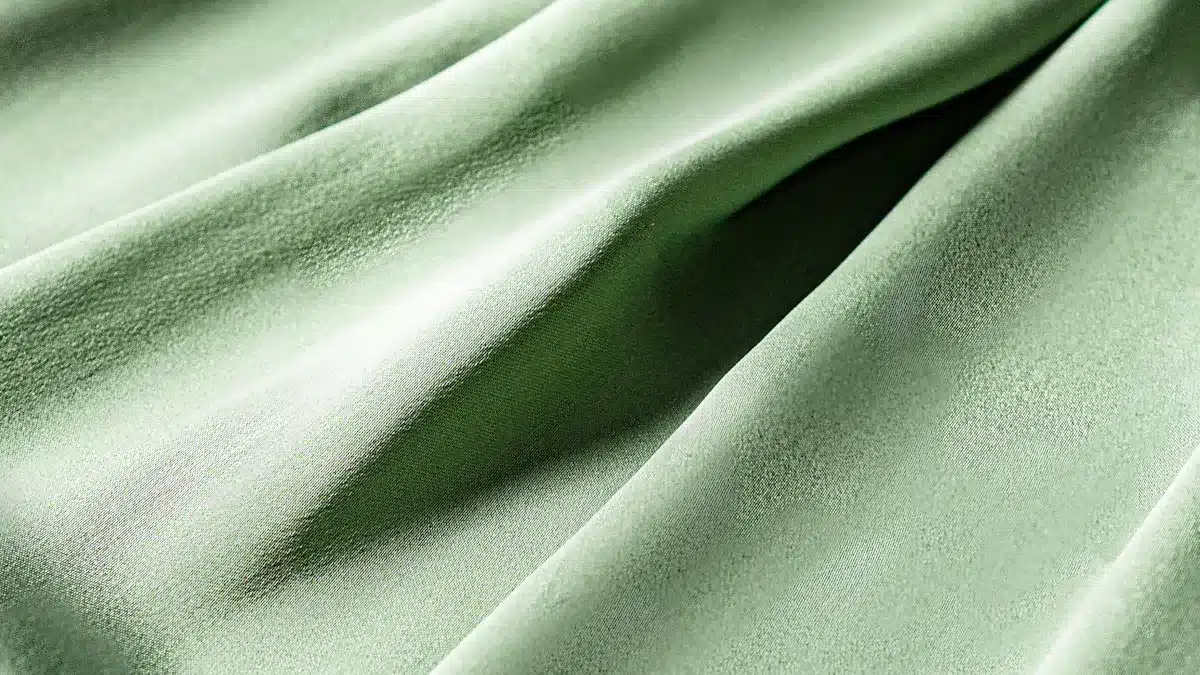
Crepe fabric comes in different types, each with special traits. Knowing these types helps you pick the best one for your needs. Let’s look at three popular kinds.
Crepe de Chine
Crepe de Chine is light and smooth. It’s made from silk or synthetic fibers like polyester. This fabric has a soft shine and feels gentle, making it great for fancy clothes. You’ll often see it in blouses, dresses, and scarves.
One great thing about Crepe de Chine is its strength. Even though it’s light, it doesn’t tear easily and lasts a long time. It also hangs nicely, giving clothes a graceful look.
Tip: Want a fabric that feels fancy but is easy to care for? Try Crepe de Chine!
Georgette Crepe
Georgette crepe is another favorite. It feels rougher than Crepe de Chine but is still light and airy. This fabric is often made from silk or synthetic fibers. Its slightly see-through look makes it great for layering in outfits.
You’ll find Georgette crepe in evening dresses, skirts, and wedding clothes. Its textured surface adds style to any outfit. It’s also easy to dye, so it comes in many colors and patterns.
Fun Fact: Georgette crepe is named after Georgette de la Plante, a French designer who made it famous in the 1900s.
Wool Crepe
Wool crepe is thicker and warmer than other crepe fabrics. It’s made from tightly twisted wool fibers, giving it a firm feel and dull finish. This fabric is perfect for cold weather and is used in suits, skirts, and jackets.
Wool crepe stretches well, making it comfy to wear. It also doesn’t wrinkle much, so your clothes stay neat all day. But it needs special care, like dry cleaning, to stay in good shape.
Note: Wool crepe is a great pick for formal or work clothes because it looks neat and lasts long.
Each type of crepe fabric has its own perks. Whether you want something light and soft or warm and sturdy, there’s a crepe fabric for you.
Polyester Crepe
Polyester crepe is a strong and budget-friendly fabric. It’s made from synthetic fibers, making it tough and long-lasting. This fabric is used in many clothes like dresses, skirts, and blouses. Its light weight makes it comfy for daily wear.
A great thing about polyester crepe is how easy it is to care for. Unlike natural fabrics, it doesn’t need special washing. You can wash it in a machine without worry. It dries fast, saving you time. Plus, it resists wrinkles, keeping your clothes tidy all day.
This fabric comes in many colors and patterns. It holds dyes well, so you’ll find bright and bold designs. Whether you need casual clothes or something formal, polyester crepe has many options.
Tip: Want a low-cost fabric that’s easy to clean? Polyester crepe is a smart choice.
Polyester crepe is also great for home décor. It’s used in curtains, tablecloths, and furniture covers. Its strength makes it perfect for items used often.
Silk Crepe
Silk crepe is famous for its soft feel and fancy look. It’s made from natural silk, giving it a smooth texture and gentle shine. You’ll see silk crepe in luxury fashion like gowns, scarves, and blouses.
This fabric flows beautifully, making clothes look elegant. It’s light, so it’s great for warm weather. Silk crepe also keeps you cool by wicking away sweat.
Taking care of silk crepe needs extra attention. Hand washing or dry cleaning is best to keep it nice. Don’t use strong soaps, as they can harm the delicate fibers.
Note: Silk crepe is perfect for special events when you want to feel elegant.
Silk crepe is also used for accessories like ties and shawls. Its classy texture adds style to any outfit.
How is Crepe Fabric Used?
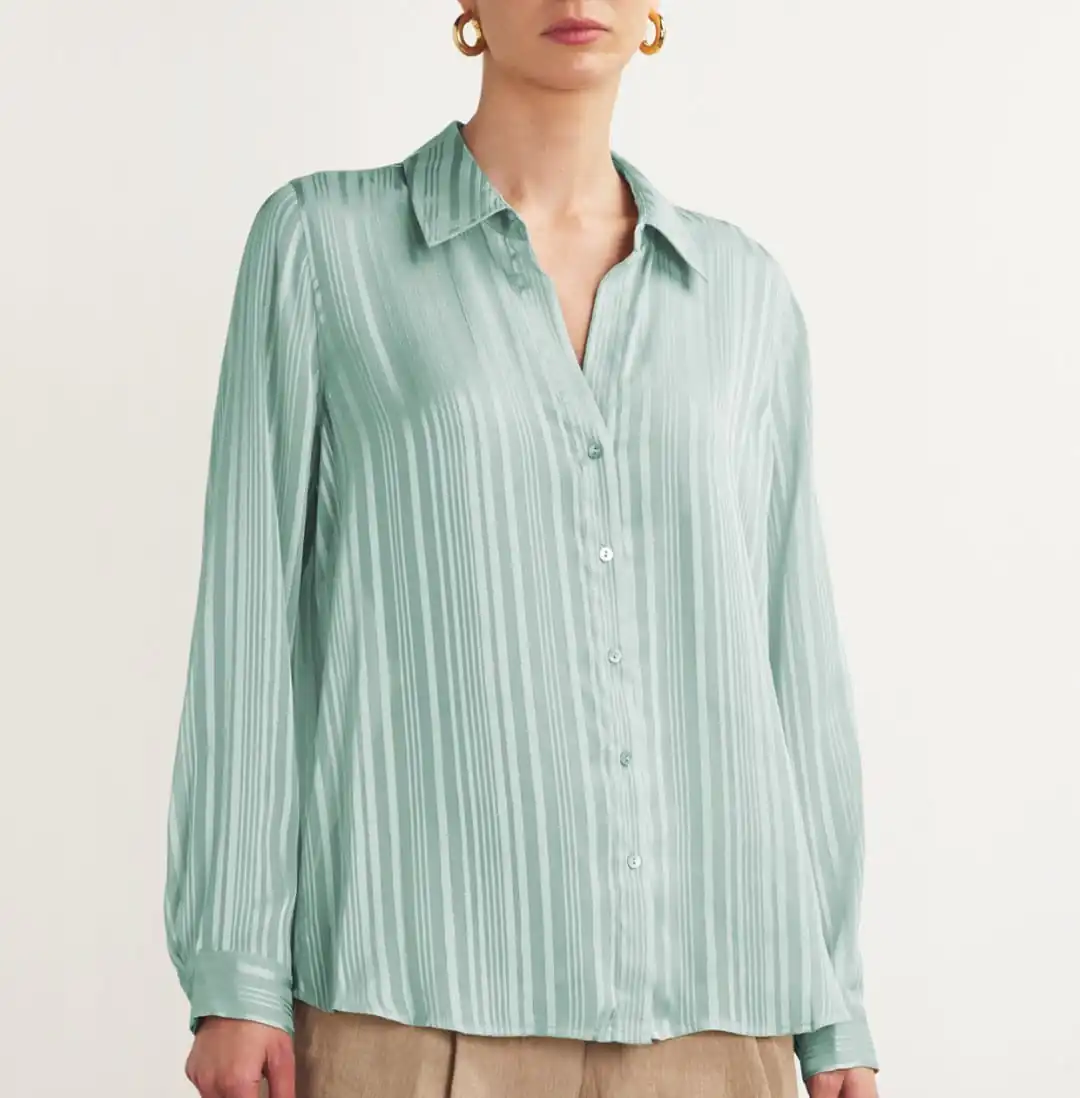
Crepe fabric is used in clothing, home décor, and accessories. Its special texture and flowy look make it popular for many things.
In Fashion (e.g., dresses, blouses, suits, evening wear)
Crepe is important in fashion. It’s used in fancy eveningwear, casual clothes, and work outfits. Its light weight makes it great for dresses that move nicely. Crepe blouses feel soft and airy, keeping you comfy all day. Wool crepe is perfect for suits and jackets, giving a neat look for formal events.
Crepe clothes are stylish and comfy at the same time. Whether you need a summer dress or a winter jacket, crepe works well. Its textured surface adds a classy touch to any outfit, making it a favorite in modern fashion.
In Home Furnishings (e.g., curtains, upholstery, table linens)
Crepe fabric makes home décor look fancy. Crepe curtains hang beautifully, adding elegance to your room. Wool or polyester crepe is strong and looks nice on furniture. Crepe tablecloths don’t wrinkle easily and stay pretty after many uses.
Crepe fits well in different home items. It holds colors nicely, so curtains and tablecloths look bright and stylish. Crepe helps create a cozy and classy feel in your home.
In Accessories (e.g., scarves, ties)
Crepe fabric is great for accessories. Silk crepe scarves are soft and light, perfect for layering. Crepe ties add style to formal clothes. These items look amazing because crepe shows patterns and colors clearly.
Crepe is loved for making modern accessories. Whether dressing up for a party or adding style to daily outfits, crepe accessories are both comfy and fashionable.
Tip: Try crepe fabric for its many uses. From clothes to home décor, it’s a smart choice for style and function.
Advantages and Disadvantages of Crepe Fabric
Advantages
Crepe fabric has many benefits, making it popular for clothes and décor. It’s flexible and works well for dresses, curtains, and more. The fabric is light, so it feels comfy, especially in hot weather. It also lets air pass through, keeping you cool and relaxed.
One great thing about crepe is how it flows. This makes clothes look smooth and stylish. Polyester crepe, for example, stays neat all day without much effort. Crepe also doesn’t wrinkle easily, saving you time on ironing.
Feature | Description |
|---|---|
Elegant Drape | Polyester crepe flows beautifully, perfect for many outfits. |
Versatility | Useful for clothing and home décor, like curtains or tablecloths. |
Breathable Nature | Keeps you cool and comfy, great for casual or formal wear. |
Wrinkle Resistance | Stays neat and smooth, needing less care than other fabrics. |
Durability | Strong and lasts long, even with frequent washing. |
Crepe is both stylish and practical. Whether for fashion or home use, it’s a smart choice that combines beauty with usefulness.
Disadvantages
Crepe fabric does have some downsides. Natural crepe, like silk or wool, wrinkles more than synthetic types. Polyester crepe resists wrinkles better but doesn’t feel as fancy as silk.
Taking care of crepe can be tricky. Silk crepe needs hand washing or dry cleaning, which takes time and costs more. Natural crepe fabrics are also pricier than synthetic ones, which might not suit every budget.
Natural fibers like wool and silk keep you warmer than synthetic ones. But synthetic crepe is tougher and cheaper, making it a good budget option. You’ll need to decide what matters most—luxury or easy care.
Note: For less work, pick polyester crepe. For a fancy feel, silk crepe is worth the extra effort.
Knowing these drawbacks helps you choose wisely. Crepe is elegant and useful, but you should think about its care and cost before buying.
How to Care for Crepe Fabric
Taking care of crepe fabric keeps it looking nice and lasting longer. Follow these easy steps to maintain its quality.
Washing Instructions
Wash crepe gently to protect its soft texture. Always check the care label first. For most crepe clothes, do the following:
Turn clothes inside out to avoid damage.
Add mild soap and skip bleach or strong chemicals.
For delicate crepe like silk or wool, hand washing is safer. Fill a bowl with cold water, add mild soap, and gently move the fabric around. Rinse well and don’t twist or squeeze it to avoid harm.
Tip: For stains, dab gently with a damp cloth and mild soap. Test on a hidden spot first to avoid ruining the color.
Drying and Ironing Tips
Dry crepe the right way to keep its shape. Lay it flat on a towel or hang it on padded hangers to air-dry. Keep it out of direct sunlight to stop colors from fading. If it’s very wet, roll it in a towel to soak up extra water before drying.
Iron crepe on low heat to avoid damage. Put a cloth between the iron and fabric to protect it. For tough wrinkles, use steam or iron the inside of the garment.
Care Instruction | Details |
|---|---|
Drying | Air-dry flat or on padded hangers; avoid dryers and sunlight. |
Ironing | Use low heat with a cloth barrier or steam for wrinkles. |
Note: High heat can ruin crepe fabric by weakening its fibers and texture.
Storage Recommendations
Store crepe properly to keep its shape and avoid wrinkles. Hang crepe clothes on padded hangers to prevent stretching. For folded items, place soft tissue paper between folds to stop creases.
Keep crepe in a cool, dry spot away from sunlight. Avoid plastic bags, as crepe needs air. For fancy or decorated items, think about using professional storage options.
Tip: Move your stored crepe items sometimes to avoid permanent wrinkles or fading.
By following these tips, your crepe fabric will stay beautiful and useful for a long time.
Crepe fabric is special for its bumpy texture and many uses. It’s great for making fancy clothes like dresses, blouses, and suits. This fabric is light and hangs nicely, making it popular in fashion. Besides clothes, crepe adds style to homes with curtains and tablecloths. Whether for outfits or home décor, crepe is both useful and classy. Try using crepe to bring elegance into your daily life.
FAQ
What makes crepe fabric unique?
Crepe fabric stands out because of its crinkled texture and lightweight feel. It drapes elegantly, making it ideal for stylish clothing and home décor. Its versatility allows it to be used in both casual and formal settings.
Can you wear crepe in all seasons?
Yes, you can wear crepe year-round. Light crepe fabrics like silk work well in summer, while heavier options like wool crepe keep you warm in winter. Choose the type based on the weather and your needs.
How do you clean crepe fabric?
Always check the care label first. For delicate crepe, hand wash with mild soap and cold water. Machine washing works for polyester crepe on a gentle cycle. Avoid harsh chemicals and high heat to maintain its quality.
Is crepe fabric durable?
Crepe fabric can be durable, depending on the fiber used. Polyester crepe is strong and resists wrinkles, while silk crepe requires more care. Proper maintenance ensures it lasts longer.
What are the common uses of crepe?
Crepe is widely used in fashion for dresses, blouses, and suits. It’s also popular in home décor, such as curtains and table linens. Its textured surface and elegant drape make it a favorite for both clothing and interiors.


